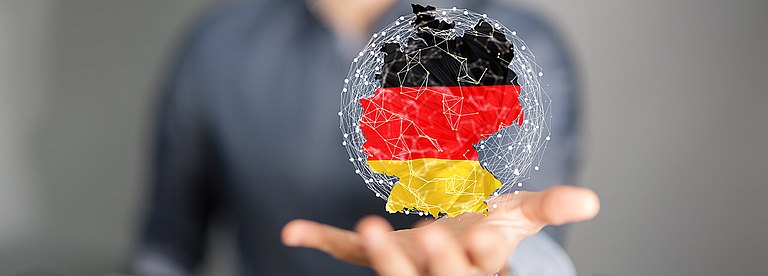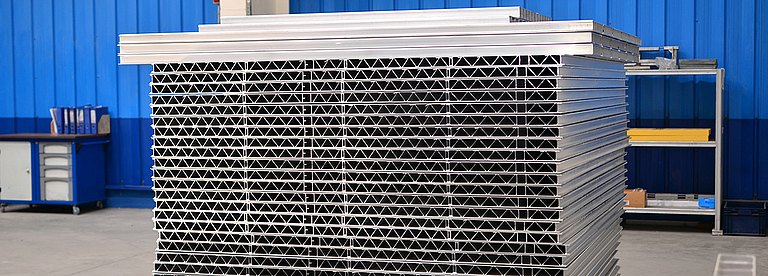C&F: "The decision improves the position of patent proprietors and enhances chances for the maintenance of property rights of innovative companies"
Düsseldorf, 12.10.2023 – On 10 October 2023, the Enlarged Board of Appeal of the European Patent Office (EPO) issued its much awaited decision on the consolidated referrals G 1/22 and G 2/22, confirming the EPO’s competence to assess entitlement to priority and also the validity of the so-called "PCT Joint Applicant Approach". As reported earlier here (cf. C&F blog entry of 15 February 2022), in the underlying joined proceedings T 1513/17 and T 2719/19, Board of Appeal 3.3.04 had referred relevant questions to the Enlarged Board of Appeal on the issue of formal entitlement to priority in cases where the set of applicants of the priority application differs from that of the later-filed application claiming priority. The cases underlying the referrals G 1/22 and G 2/22 concerned PCT applications (international applications) for which different applicants acted as applicants for different country designations and where only the applicants for one designation (US) were also the applicants for a priority-establishing application.
In its answer to the first referral question, the Enlarged Board of Appeal confirmed the EPO’s competence to assess entitlement to priority and acknowledged a rebuttable presumption that applicants are entitled to claim priority.
According to Art. 87 EPC, an applicant of a patent application may claim priority of a patent application filed previously by the same applicant within 12 months of the filing date of the previous application. The later filed patent application may then be treated as having been filed on the date when the previous application was filed if it claims subject-matter disclosed in the earlier application. The right to claim priority of the previous application is available also to a successor in title of the applicant of the previous application.
According to well-established practice at the EPO, in a case where joint applicants file the subsequent patent application, it is sufficient if one of the applicants is the applicant for the previous application or that priority applicant’s successor in title. There is no need for a special transfer of the priority right to the other co-applicant(s) of the later filing claiming priority.
The question whether this principle can be extended to a more general situation in which some of the joint applicants are applicants for US only and some of the joint applicants are applicants for the other states designated in a PCT-application was subject to one of the questions referred to the Enlarged Board of Appeal. Namely, the question was referred whether a party B can validly rely on the priority right claimed in a PCT-application for the purpose of claiming priority rights under Article 87(1) EPC, in the case where a PCT-application designates party A as applicant for the US only and party B as applicant for other designated states, and the PCT-application claims priority from an earlier patent application that designates only party A as the applicant.
In the past, this constellation regularly presented itself when the priority-establishing first application was filed in the USA, where until recently, only the inventors themselves - usually employees of larger companies - were allowed to act as applicants, and the companies then filed a PCT application, claiming the priority of the previous US application that had been filed in the name of the inventors as applicants. In such PCT applications, the inventors were usually still designated as applicants for the US only and the companies were designated as applicants for the other designated states (rest of the world).
Although usually the inventors and the companies agreed that the priority claim of the subsequent PCT-application should be valid, disputes have arisen in the past in opposition proceedings before the EPO when third parties questioned a formally valid transfer of the priority right from the inventors as applicants of the priority application to the company as applicant of the subsequent PCT application.
The decision in G 1/22 and G 2/22 of the Enlarged Board of Appeal now clarifies this question. According to its headnotes, in the described situation where “a PCT application is jointly filed by parties A and B, (i) designating party A for one or more designated States and party B for one or more other designated States, and (ii) claiming priority from an earlier patent application designating party A as the applicant, the joint filing implies an agreement between parties A and B allowing party B to rely on the priority, unless there are substantial factual indications to the contrary”.
In other words, it appears that at the EPO, the joint filing of a PCT application by applicants for US only that are also applicants of an earlier application from which the PCT application claims priority and by further applicants for the other designated states will be regarded as an implied agreement that the priority claim should be valid for the PCT application unless a third party can substantiate substantial factual indications to the contrary.
"Despite a change in U.S. patent law that no longer requires U.S. priority applications to be filed by inventors, recognition by the Enlarged Board of Appeals of the applicability of the Joint Applicants Approach to PCT applications is nevertheless beneficial to many innovative companies, as this constellation will continue to appear in EPO opposition proceedings for several years to come," says Dr. Peter Reckenthäler, patent attorney at Cohausz & Florack (C&F). Dr. Natalie Kirchhofer, patent attorney at C&F adds, "it will be interesting to see how parties will interpret and make use of the “rebuttable presumption” of entitlement to priority, but the decision can be expected to improve the position of patent proprietors and enhances chances for the maintenance of property rights of innovative companies".



